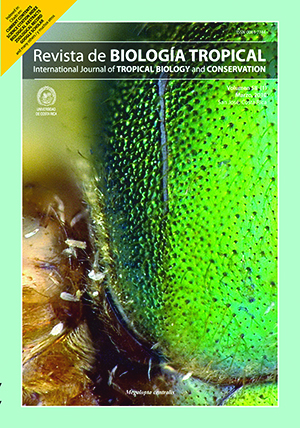Abstract
Anchialine habitats in the Hawaiian Islands, characterized as coastal bodies of land-locked salt or brackish water that fluctuate with the tides due to subterranean connections, are the only ecosystems of this type found within the United States. These habitats are currently subject to anthropogenic impacts that threaten their future existence. Previous research has shown strong genetic population structure of an endemic atyid shrimp, Halocaridina rubra, in these habitats. The native alpheid shrimp, Metabetaeus lohena, whose known range entirely overlaps that of H. rubra, has feeding and reproductive behaviors that are biologically distinct from H. rubra. Its historic scarcity and status as a candidate for the US Fish and Wildlife Department's Endangered Species List, make M. lohena an ideal species to compare against the known genetic structure of H. rubra. We investigated the population structure of this native anchialine shrimp to test the hypothesis that genetic population structure differs between the two shrimp species and that M. lohena is genetically unstructured across its range. A survey of 605 bp of the mitochondrial cytochrome c oxidase subunit I (COI) gene from 127 individuals collected at 7 sites spanning the islands of O'ahu, Maui and Hawaii revealed 43 haplotypes. The most common haplotype was represented in similar proportions from all sites sampled, accounting for 44% of the surveyed sequences. Analyses of molecular variation (AMOVA), pairwise FST values, Bayesian estimates of migration (M), Mantel tests and Nested Clade Analyses (NCAs) all failed to reveal evidence of major barriers to gene flow among most populations separated by inter-island channels. This lack of genetic structure in M. lohena is found to be in stark contrast with the highly structured population of H. rubra, and may be attributed to oceanic dispersal strategies and/or a recent introduction to the Hawaiian Islands.##plugins.facebook.comentarios##

This work is licensed under a Creative Commons Attribution 4.0 International License.
Copyright (c) 2010 Revista de Biología Tropical
Downloads
Download data is not yet available.






